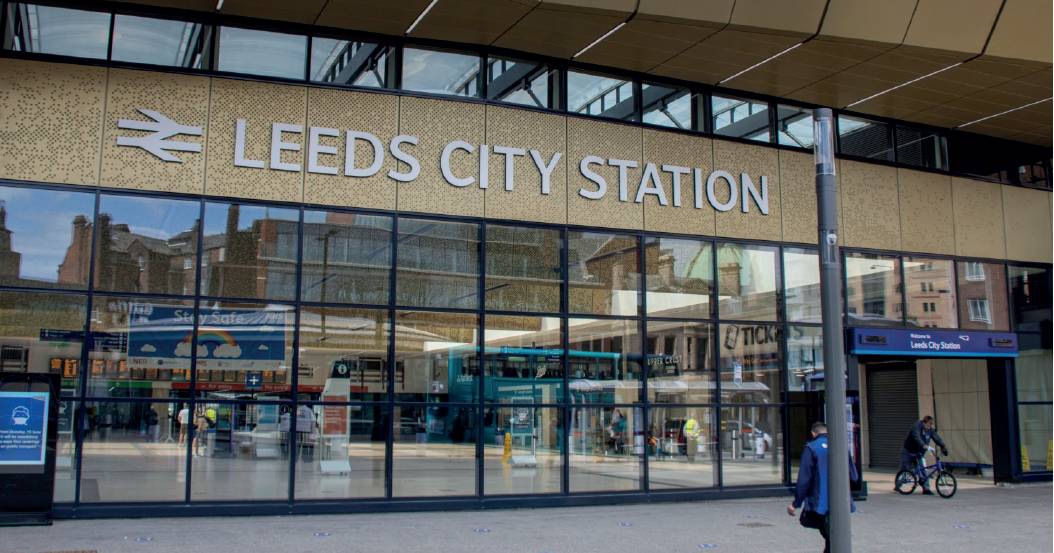The biggest issues of the month explored | Rail
Inside Track
Rail
Rethink of northern rail plans gets underway with the launch of Leeds High Speed 2 study
Government starts promised review of bringing HS2 into Leeds and agrees to re-examine the case for better connecting Bradford by rail
By Rob Hakimian
Ministers launched a long-awaited study of options for running High Speed 2 (HS2) trains to Leeds city centre in July. Results are expected in two years.
The £100M “HS2 to Leeds” study, as it has come to be known, was promised in the Department for Transport’s Integrated Rail Plan (IRP), published in November 2021. The plan set out a £96bn investment programme for rail networks in the North.
The study is seen as a consolation for cancelling most of the eastern leg of HS2 between the West Midlands and Leeds. Instead the IRP has prioritised the “core network” of Northern Powerhouse Rail (NPR) between Manchester and Liverpool.
 The government review will re-examine the case for a High Speed 2 connection to Leeds
The government review will re-examine the case for a High Speed 2 connection to Leeds
The study will consider capacity at Leeds Station and take into account local views, as well as factors such as disruption, economic development, value for money, affordability, deliverability and timescales. Technical work will be led by Network Rail with support from HS2 Ltd.
Assessment of “viable choices” consistent with the decisions reached in the IRP will be assessed and could include HS2 connections to Leeds via Nottingham and Newark, Sheffield or Manchester, as well as full reinstatement of the eastern leg of HS2.
The DfT added: “During the course of the study, we intend to review the case for focusing development work on a smaller number of options, taking account of evidence including costs, affordability, benefits and value for money.”
The government also committed to “a reassessment of the evidence for better connecting Bradford and the case for a new station” as part of the HS2 to Leeds study. The promise comes as part of its response to the Commons transport select committee’s IRP inquiry.
The IRP was criticised by the rail sector and the transport committee as it scaled back previous plans for NPR. It said there was no business case for a new Bradford station despite analysis from Arup saying it would bring a £30bn economic boost to the region.
Transport select committee chair Iain Stewart said: “The main arguments of the committee’s report have been vindicated as the government has accepted that more work is needed on key elements of the IRP – its cost-benefit ratios, contributions to levelling up and projections on shortening journey times.
“We welcome those elements of the response, even though we regret this work was not completed before the major strategic decisions in the IRP were taken.
“We are particularly glad to see DfT taking an open-minded approach to building a new station at Bradford – sometimes dubbed the most badly connected city in the UK – and doing more analysis of a range of different network options.
“As we emphasised in our report, it is vital that the way this £96bn investment is used is based on the most robust evidence. What we will be looking for now is a willingness for the government to change course if that is what this renewed evidence base suggests.
“It would be remiss to not point out that the committee called on the DfT to crack on with these work streams months ago. The HS2 to Leeds study is now expected to take two years and we are still waiting for an alternative to the Golborne Link [the HS2 link to the north of Manchester] to emerge. By then one can only wonder if all of this will still be achievable within the £96bn spending envelope, or whether inflation and rising interest rates will continue to cut this budget down in real terms.”
While the start of the review has also been welcomed by the wider industry, there is disappointment about the timeframe and some do not believe it goes far enough.
West & North Yorkshire Chamber of Commerce chief executive James Mason said: “Having worked on bringing HS2 to Yorkshire for many years, a two-year delay so long after the Integrated Rail Plan promised this review is creating unnecessary uncertainty and deterring private investment including in Leeds City Centre.”